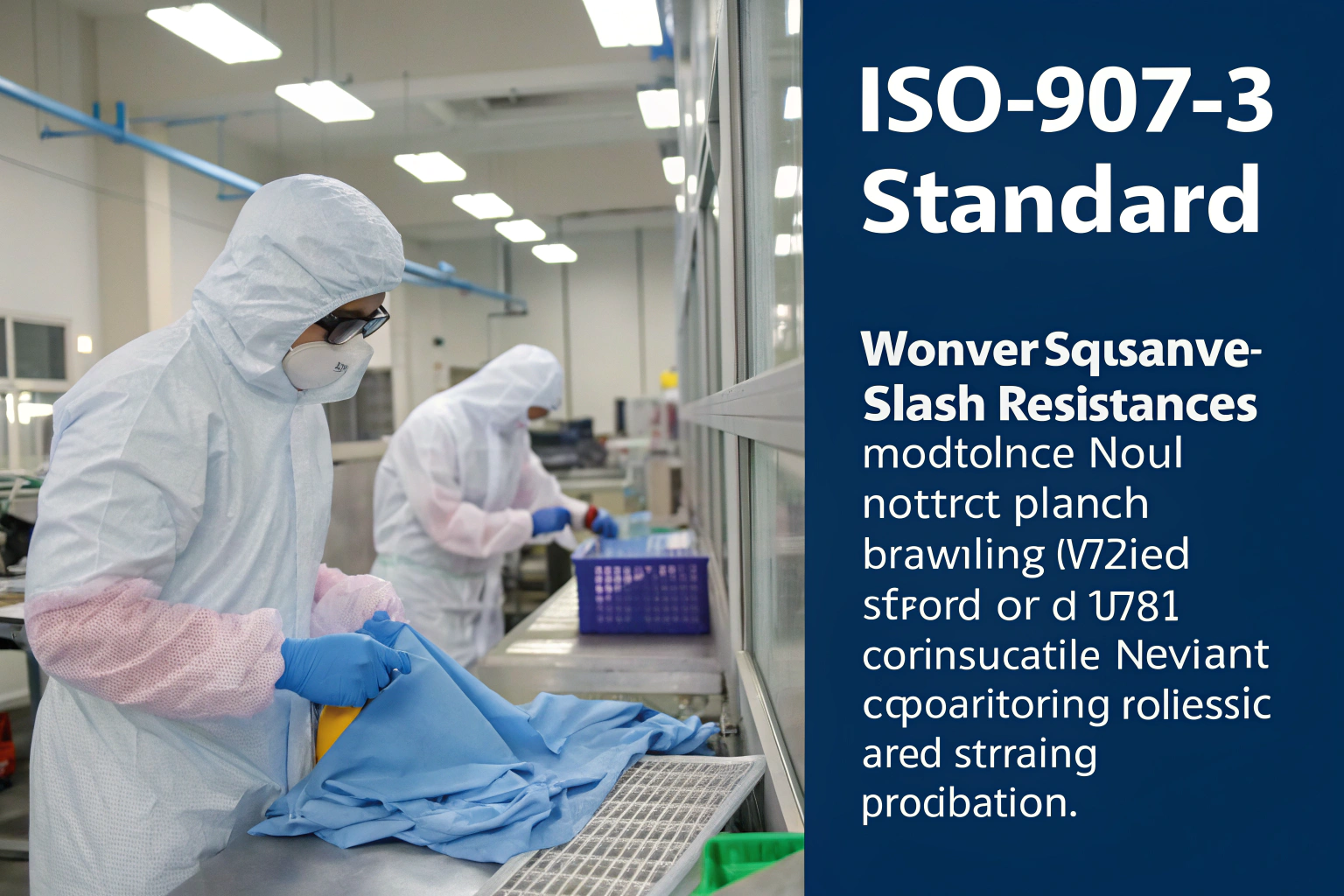When buyers in the medical, hygiene, and industrial textile markets look for reliable non-woven fabrics, one challenge stands out: ensuring consistent protection against liquid splashes. Without proper standards, fabric performance can vary, putting users at risk and damaging trust in suppliers. This is where ISO 9073-8 becomes critical—it provides a globally recognized benchmark to measure splash resistance for non-wovens, creating trust and confidence for global buyers.
The ISO 9073-8 standard is key because it defines a clear, repeatable method for testing splash resistance in non-woven fabrics, ensuring consistent quality and compliance for applications in protective clothing, medical gowns, masks, and industrial safety gear.
As a fabric manufacturer and exporter, I have seen firsthand how critical this standard is for our clients in Europe and America. Buyers not only demand high-quality fabrics but also require proof that these fabrics can perform under pressure. By adhering to ISO 9073-8, we ensure that our materials meet global safety expectations, helping our partners reduce risk and win the confidence of their end customers.
What Does ISO 9073-8 Test in Non-Wovens?
ISO 9073-8 specifically tests the resistance of non-woven fabrics to penetration by liquids under hydrostatic pressure. This is vital for industries where fluid exposure is common and safety cannot be compromised.
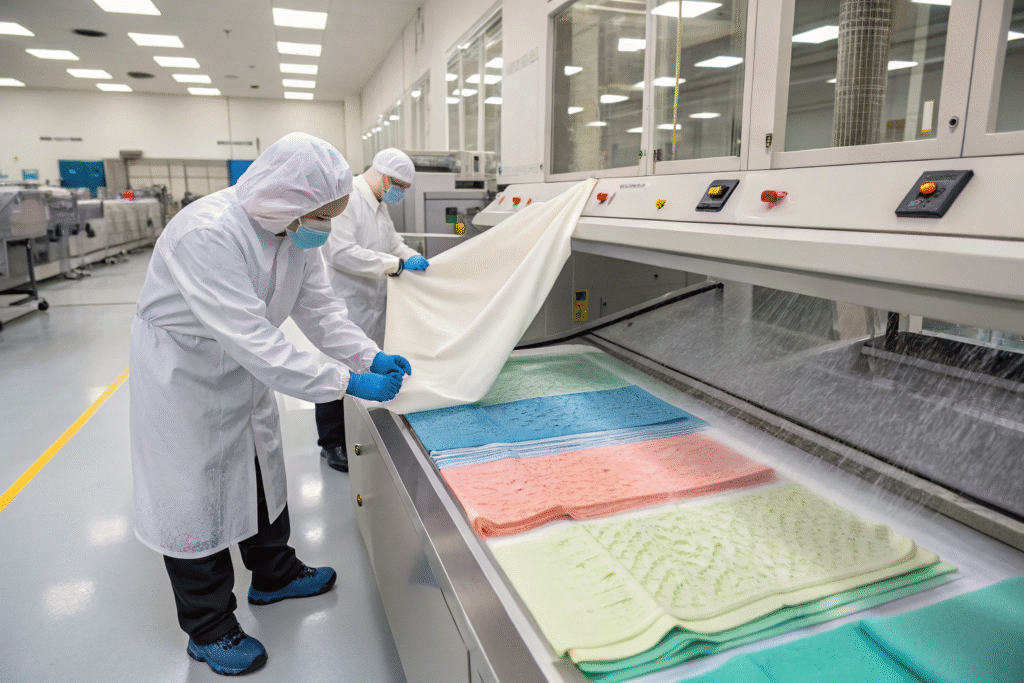
How does ISO 9073-8 testing work?
The method applies controlled liquid impact on the non-woven fabric and measures penetration levels. Unlike basic water-repellency checks, this test simulates real-world splash conditions. For example, in medical gowns, it ensures protection against blood and body fluids, minimizing contamination risks. To learn more, see the official ISO Standards Catalog and details from SGS textile testing.
Why is it different from water repellency tests?
ISO 9073-8 focuses on liquid penetration under pressure, not just surface water resistance. This distinction is crucial for PPE, where fabrics need to block high-pressure fluid exposure. Non-certified repellency tests may give false confidence, while ISO compliance provides measurable assurance. Industry resources like Intertek testing services and TÜV SÜD product safety explain the importance of standardized penetration testing.
Why Is This Standard Important for Medical Fabrics?
For hospitals and healthcare buyers, patient and staff safety come first. Non-woven fabrics used in surgical gowns, masks, drapes, and protective covers must meet stringent safety benchmarks. ISO 9073-8 helps hospitals avoid purchasing untested or underperforming products, ensuring compliance with international regulations.
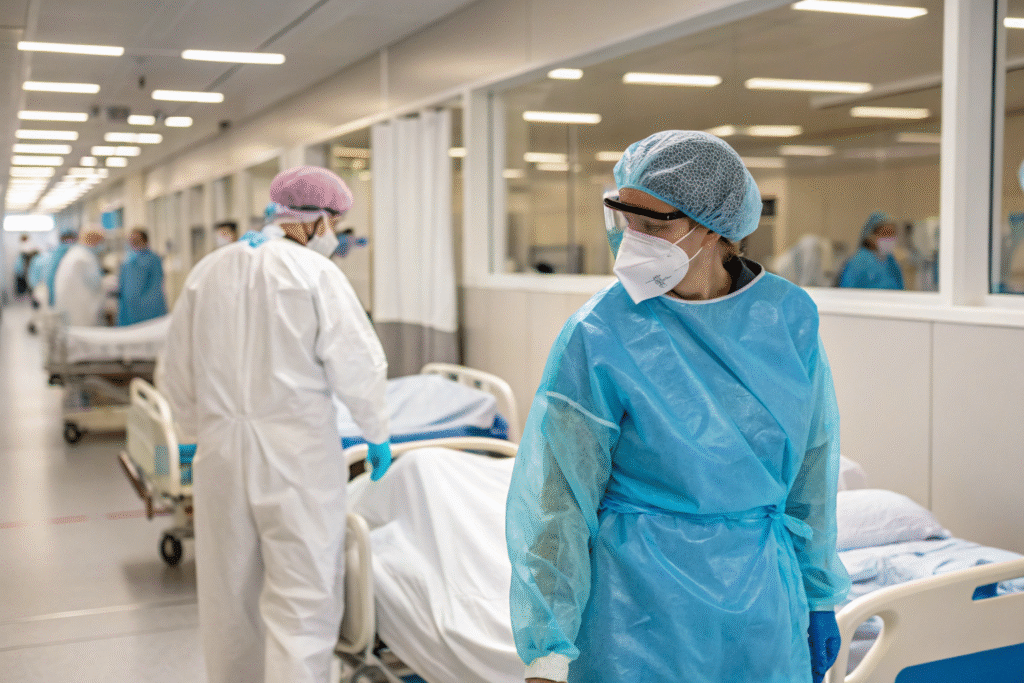
What risks do hospitals face without ISO 9073-8 compliance?
Without this certification, hospitals risk using fabrics that fail during surgeries or emergencies, leading to contamination and higher infection rates. For more details, see WHO infection prevention guidelines and CDC PPE standards.
How does ISO compliance build trust with buyers?
Global healthcare buyers trust suppliers that provide ISO-certified products because it shows reliability, safety, and accountability. Buyers in the U.S. and EU often make ISO 9073-8 compliance a prerequisite for procurement. For additional insights, refer to European Commission medical device regulations and FDA guidance on medical textiles.
How Does ISO 9073-8 Support Global Trade?
ISO 9073-8 serves as a universal language for textile safety, making international trade easier. It reduces disputes over quality, simplifies customs clearance, and increases trust between buyers and suppliers.
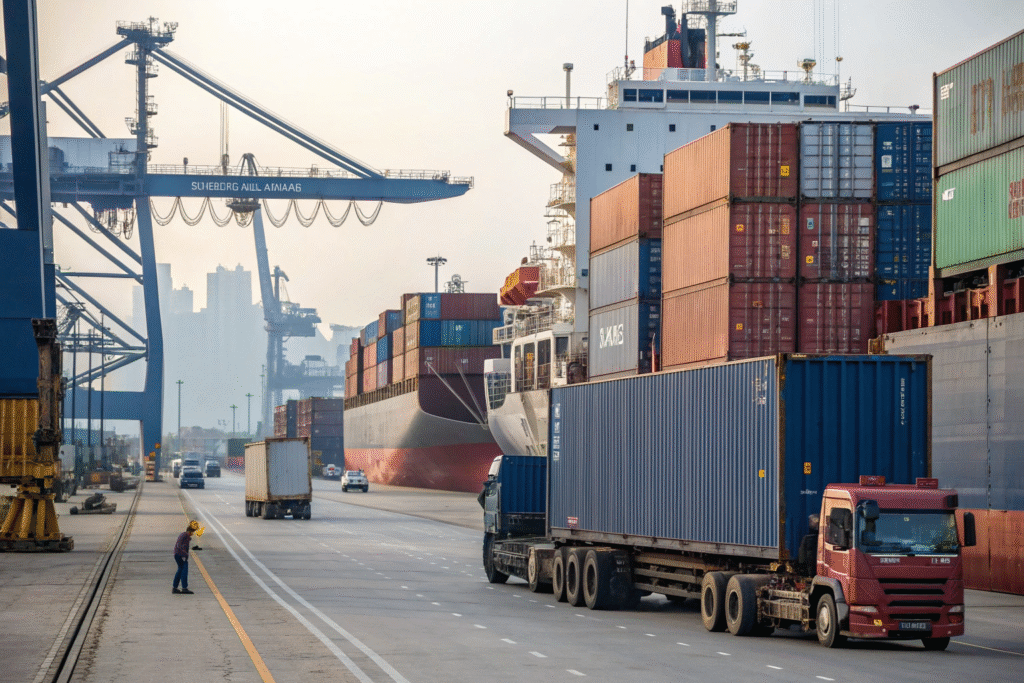
Why is ISO important in customs and import approvals?
Customs authorities and regulators often require compliance certificates for protective fabrics. Having ISO 9073-8 certification speeds up clearance and minimizes shipment delays. For more details, see WTO trade facilitation agreement and China Customs textile import rules.
How does ISO reduce trade disputes?
By setting clear testing methods, ISO 9073-8 prevents disagreements between buyers and suppliers. For example, when U.S. buyers order medical fabrics from China, certified test reports eliminate doubt. Independent third-party verification from labs like Bureau Veritas and UL Solutions support transparent trade practices.
What Are the Benefits for Buyers and Brands?
For brands, buying ISO-certified non-wovens reduces risk and enhances reputation. When customers know a brand uses certified fabrics, it builds trust and credibility in global markets.
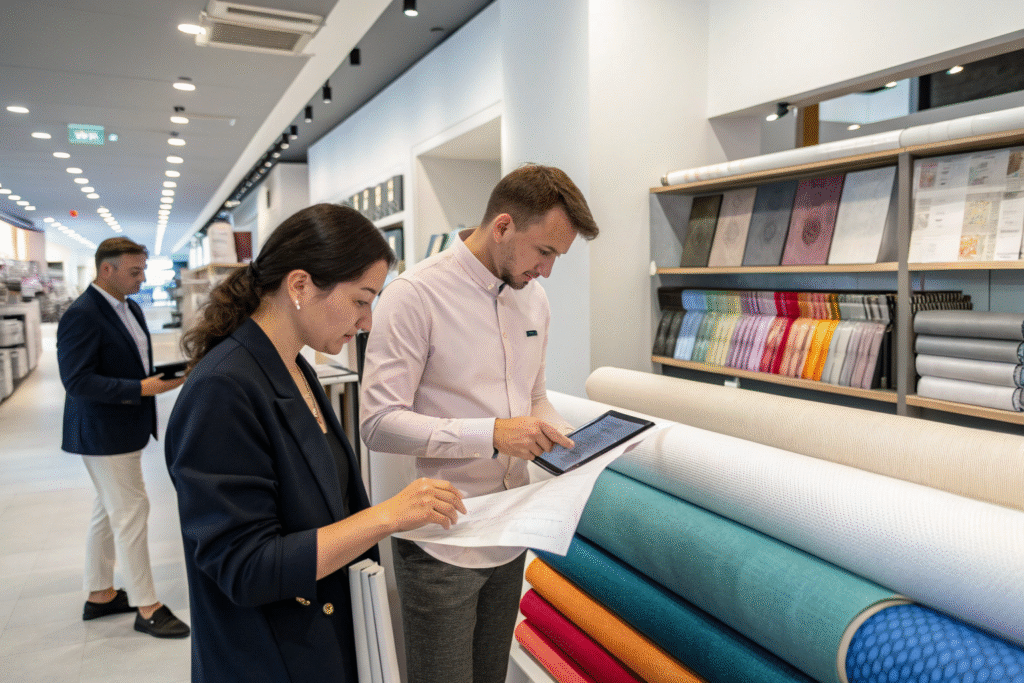
How do certified fabrics protect buyers?
Certified fabrics help buyers avoid liability issues from defective PPE or textile failures. Compliance with ISO standards protects businesses from recalls, lawsuits, and negative publicity. For case studies, see OECD product safety.
Why do ISO standards add marketing value?
Brands that highlight ISO-compliant fabrics in their marketing win customer confidence. Buyers see certification as proof of quality and responsibility. This is especially important for eco-friendly and functional fabrics, where customers demand transparency. More examples are on Textile Exchange sustainability reports and Better Cotton Initiative.
Conclusion
ISO 9073-8 is not just a technical requirement—it is a key standard that ensures splash-resistant non-woven fabrics meet global safety needs. From protecting healthcare workers to supporting global trade, this certification gives buyers confidence and helps suppliers prove quality.
If you are looking for a reliable supplier of ISO 9073-8 tested fabrics, our team at Shanghai Fumao can provide professional support, fast development, and large-scale production. To start your custom fabric order, contact our Business Director Elaine at: elaine@fumaoclothing.com.

